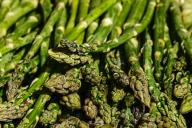If you're into unusual and exotic pets, then you can try getting a pet snake!
While these reptiles tend to produce less dirt or noise, they also require different conditions.
Here are some facts about having a pet snake.
Provide Heating
Snakes are cold-blooded, so you need to create a temperature gradient in the enclosure.
Use heating devices like under-tank heaters or heat lamps.

One side should be warm (around 85-90°F), and the other side should be cooler (around 75-80°F).
Use a thermostat to maintain the temperature.
Substrate and Humidity
Choose an appropriate substrate for the enclosure's floor, such as aspen bedding, cypress mulch, or coconut husk.
The substrate helps maintain humidity, which varies depending on the snake species.
Research your snake's humidity needs and use a hygrometer to monitor it.
Hide Boxes
Snakes like to hide, so provide at least two hide boxes in the enclosure – one on the warm side and one on the cool side.
These hide boxes can be caves or hollow logs.
Climbing and Enrichment
Many snakes enjoy climbing, so add branches or artificial plants to the enclosure to provide opportunities for exercise and exploration.
These also create a more natural environment for your snake.
Water Bowl
Provide a clean, shallow water bowl for your snake to drink from. Keep the water fresh and change it regularly.
The bowl should be big enough for the snake to soak in if needed.
Feeding
Research your snake's diet, as it varies among species. Most pet snakes eat mice or rats.
Feed prey that is the appropriate size for your snake's age and size.
Prey should be thawed and warmed to room temperature before offering it to your snake.
Handling
Not all snakes enjoy being handled, and some may become stressed if handled too often.
When you do handle your snake, be gentle and avoid doing so right after it eats.
Gradually introduce handling and watch your snake's behavior for signs of discomfort.








